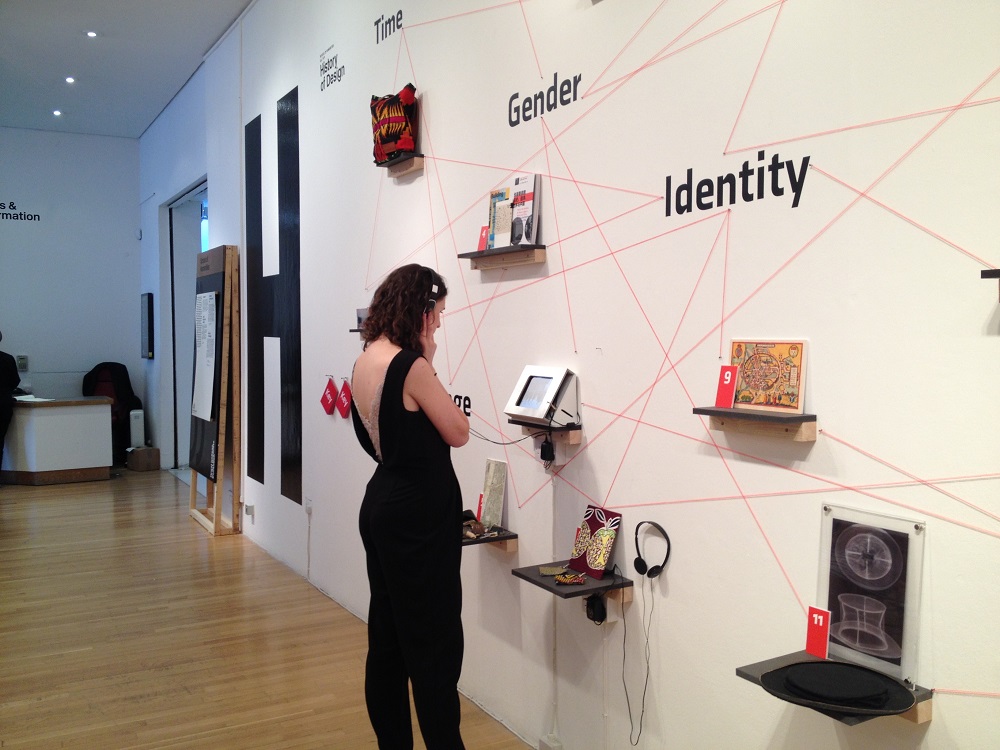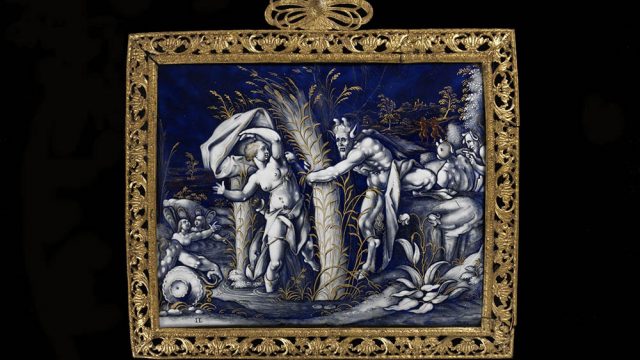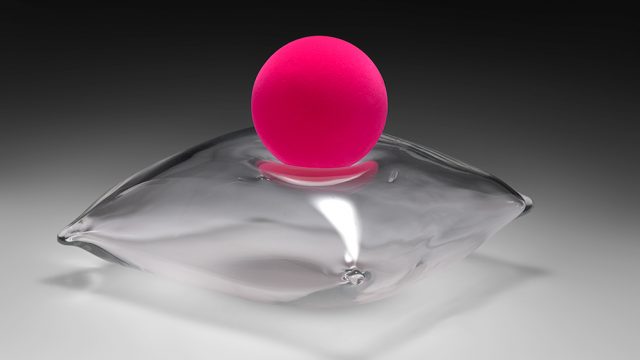In the second guest post by graduating V&A/RCA History of Design students, Chloe Frechette and Zara Arshad take us behind the scenes in a sneak preview of what’s on display at ShowRCA, which opens to the public today.
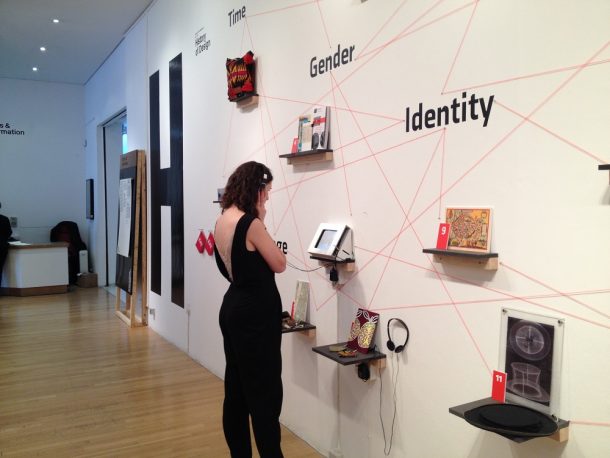
For the past week, V&A/RCA History of Design students have created networks, combining key concepts and bright pink yarn. In doing so, our part of ShowRCA 2015 celebrates the breadth of History of Design by teasing out ten representative themes for this year’s graduating students, highlighting the connections between individual studies.
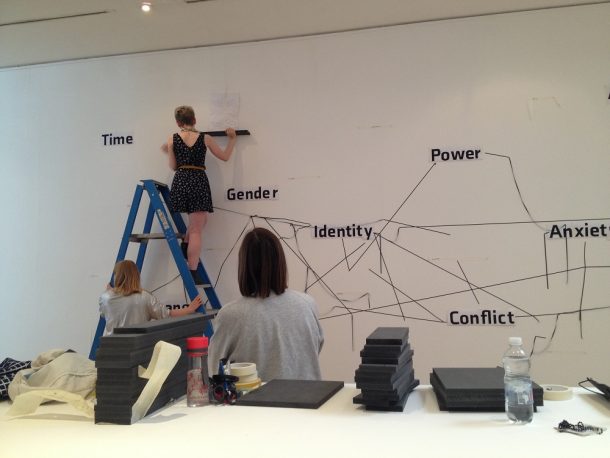


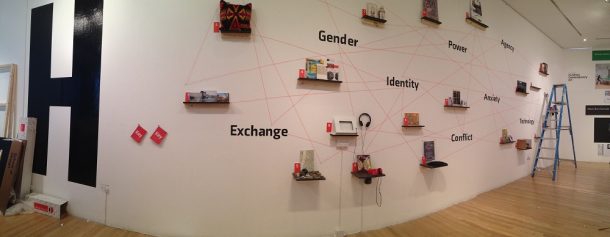
Individual dissertations are evoked in the exhibition space as a series of carefully chosen objects on shelves. This post uses a selection of these assemblages to reveal the personal processes behind each project in the conception, investigation and composition of the final 30-000-word dissertation.

Miranda Vane’s array of chocolate bars draws attention to the varying priorities of consumers in her study of contemporary food making in the UK. Arranged according to monetary value, these ostensibly identical objects, with their range of colours, materials, and typography, speak to the different qualities valued by consumers of chocolate and the importance of design in every step of food innovation, beyond the edible endpoint.
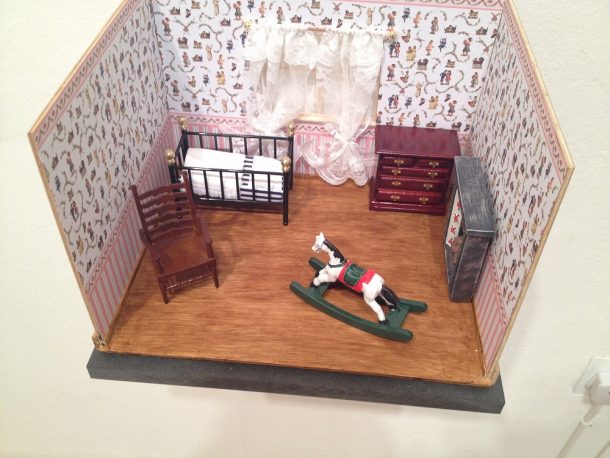
To reflect her study of children’s nurseries between 1850 and 1914, Sophie Farrelly has displayed a model of a Victorian nursery, complete with pink patterned wallpaper and a selection of interior furnishings. This mirrors in miniature her primary sources, which highlighted the importance of interior spaces and objects; it also evokes a late nineteenth- and early twentieth-century dollhouse, a popular object in Victorian nurseries.
Our own research transports audiences from early twentieth-century cocktail consumption in New York to contemporary China. Chloe’s project relies on the material culture of cocktail drinking, shakers, stemware, and bar books, such as those on display, to explore issues of American modernity, while re¬evaluating the significance of Prohibition and Repeal in the development of domestic cocktail culture.
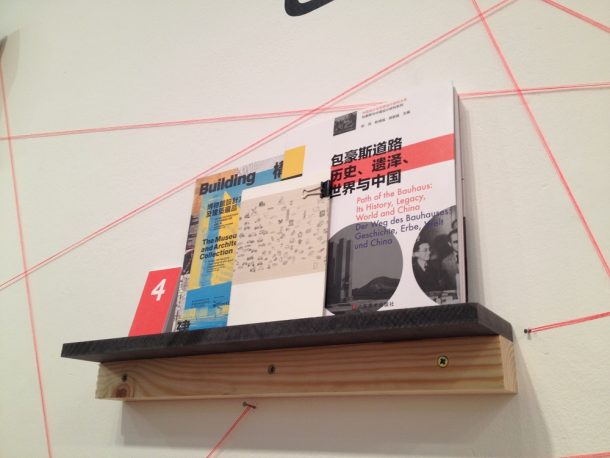
Zara’s study tracks the rise of the design museum in Mainland China and Hong Kong: a phenomenon that has been influenced by the cultural and creative industries ¬or, rather, localised forms of these policies. Each institution studied has interpreted ‘design’ in very different ways, and it was necessary to recognise this multiplicity in the shelf display, with the items featured representative of each of the Chinese design museums investigated.
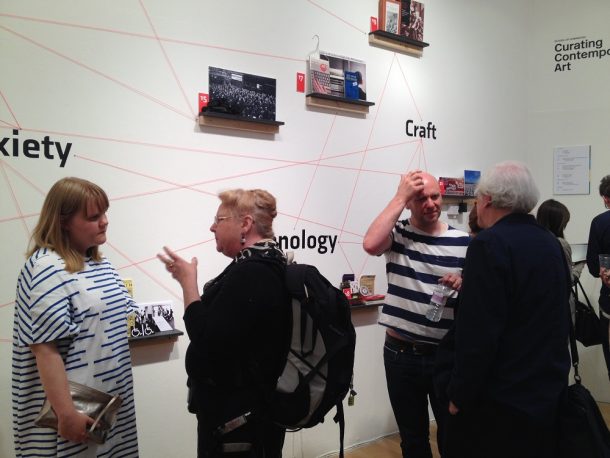
The theme carried across our Show, Symposium and publication is “networks”, though perhaps it may be more accurate to say “dialogues”. We want to create conversations, not only within V&A/RCA History of Design, but also with art and design students at the Royal College of Art, and beyond. We want audiences to question how early eighteenth-century book design in Venice may be connected to the contemporary production of wax textiles in the UK, or how Scandinavian design in the late 1960s may link to the sartorial expression of the Siamese monarchy in the late nineteenth- and early twentieth century.
By creating these dialogues, we have shown how interconnected we all really are, across time, topics and geographies.
Come and join the conversation at ShowRCA Kensington. We are open 12–6pm daily from Thursday 25 June to Sunday 5 July, with late opening to 9pm Wednesday 1 July (closed Friday 3 July).
We’d also love to meet you if you’re considering studying History of Design. The V&A/RCA History of Design Programme holds a special Open Day on Wednesday 1 July, which begins in the Humanities Show space at 3pm, before moving to the Humanities Seminar Room. For more details about how to find us, see here.
